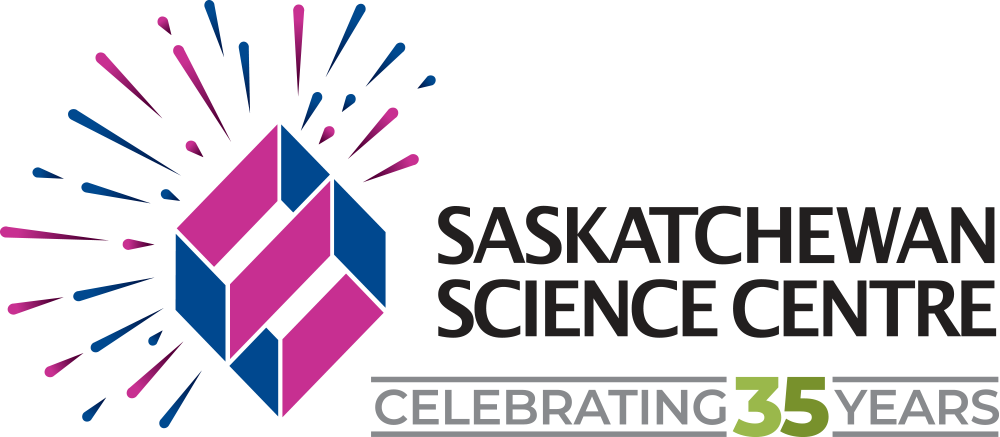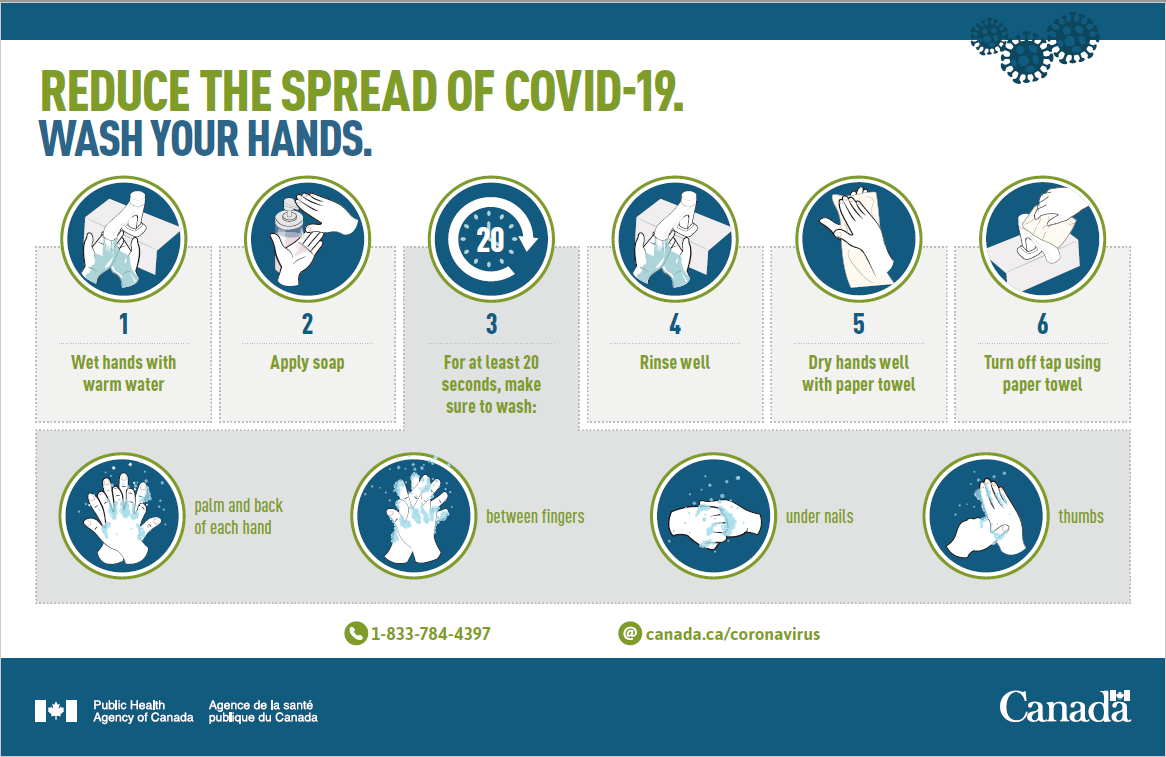Wash Your Hands
Soap doesn’t (usually) kill germs, but it can break them up and remove them. Washing your hands is a key part of preventing the spread of all diseases, including COVID-19. Read on to find out why.
This article is part of a series to help people understand COVID-19. Click the button below to see all of the articles in the series.
Wash Your Hands
One of the most effective ways we have to prevent the spread of viruses such as SARS-CoV-2 is to properly wash our hands with warm water and soap. By doing so, we remove highly contagious pathogens from our skin, preventing those pathogens from spreading to other surfaces we touch or to other people around us. A pathogen is a micro-organism such as a bacteria or a virus that can cause disease or illness in a host.
According to the Government of Canada, we know that the SARS-CoV-2 virus (and accordingly, COVID-19) spreads:
"from an infected person to others through respiratory droplets and aerosols created when an infected person coughs, sneezes, sings, shouts, or talks. The droplets vary in size from large droplets that fall to the ground rapidly (within seconds or minutes) near the infected person to smaller droplets, sometimes called aerosols, which linger in the air under some circumstances.
The relative infectiousness of droplets of different sizes is not clear. Infectious droplets or aerosols may come into direct contact with the mucous membranes of another person's nose, mouth or eyes, or they may be inhaled into their nose, mouth, airways and lungs. The virus may also spread when a person touches another person (i.e., a handshake) or a surface or an object (also referred to as a fomite) that has the virus on it, and then touches their mouth, nose or eyes with unwashed hands.”
It’s All About The Molecules
Proper handwashing is such an effective tool to prevent the spread of SARS-CoV-2 and other harmful viruses because of how soap molecules work.
Scientists know that the structure of the SARS-CoV-2 virus contains a crown of external spike proteins that attach to our cells in order to reproduce and spread throughout our bodies.
“The spike protein is the major surface protein that it uses to bind to a receptor — another protein that acts like a doorway into a human cell. After the spike protein binds to the human cell receptor, the viral membrane fuses with the human cell membrane, allowing the genome of the virus to enter human cells and begin infection.”
These spikes are the reason that we call viruses such as SARS-CoV-2 coronaviruses - under a microscope these spikes resemble the corona of the sun, which looks similar to a crown. The Latin word for crown is corona, hence coronavirus.
Soap molecules are a type of surfactant. These molecules have two opposite ends: one which is hydrophilic (likes water) and one which is hydrophobic (does not like water, but DOES like lipids - natural oils and fats). Many bacteria and viruses are surrounded by a protective lipid layer. These lipid layers protect the virus from threats and also help it to stick to our skin. In addition, our skin is covered in oils and the virus can easily attach to those oils.
When we use soap and water to wash our hands the hydrophilic end of the soap molecules attaches readily to the water molecules, but the hydrophobic ends want to get away from the water. One of the best ways to do that is by inserting themselves into the lipid layer of the pathogens (in this case, SARS-CoV-2) and to the oils on our skin.
As we continue to scrub our hands with soap (for at least 20 seconds) we build a lather and lift these oils from our skin and encourage the hydrophobic ends of the soap molecules to connect with the pathogen. When we rinse our hands, the viruses and oils are washed away.
In the case of SARS-CoV-2 (the virus that causes COVID-19) and other viruses, soap is also very good at breaking up the non-covalent bonds that hold the virus together - breaking the virus apart into tiny pieces.
When we rinse the soap lather from our hands, the viruses (and pieces of the virus) which are now attached to the soap molecules are removed from our skin. Without soap molecules to bind to the proteins surrounding the virus, handwashing would not be an effective means for preventing the spread of bacteria and viruses. This means that simply running your hands under water without using soap is not effective.
You can explore soap molecules at home with this simple demonstration.
How to Wash Your Hands
Wet your hands with clean, running water.
Apply soap
Lather your hands by rubbing them together: rub your palms together, lather the backs of your hands, between your fingers, under your fingernails, your thumbs and up near your wrists. To make sure your hands are clean lather them for at least 20 seconds (an easy way to keep track of the time is to sing Happy Birthday twice)
Rinse well under clean, running water.
Dry your hands with a paper towel and then use that towel to turn off the tap and open the bathroom door if needed. This ensures your hands remain clean without coming into contact with a potentially contaminated surface like a tap or door handle.
Proper handwashing does more than prevent the spread of COVID-19. According to the Center for Disease Control about 1.8 million children under the age of 5 die each year from diarrheal diseases and pneumonia. It is estimated that handwashing alone could protect 1/3rd of these kids from diarrhea and 1/5th of these kids from pneumonia.
Some Additional Notes That May Be Helpful:
Because the temperature of the water is never hot enough to kill pathogens, even cold water can be used to wash your hands. Some health organizations do state to use warm water, however. This is because warm water may help to maximize the lathering effect of soap.
Drying your hands with a clean towel may improve the benefits of handwashing - the towel can help to remove additional pathogens that may not have rinsed off during the handwashing process.
Running water is a key component to rinse away the germs. Don’t simply use a still tub of water. Remember, handwashing doesn’t kill the germs - it lifts them from your skin and allows you to rinse them away.
Global Handwashing Day is celebrated annually on October 15.
What About Hand Sanitizer?
Hand sanitizer is an alcohol-based chemical compound that has been proven to kill many bacteria and viruses. Hand sanitizer, as long as it contains at least 60% alcohol, is effective in helping prevent the spread of harmful pathogens when access to clean, warm water and soap is not available. One of the key steps in using hand sanitizer is to ensure that it dries on the skin - do not rinse or wipe off hand sanitizer before it is dry or the effectiveness will be compromised.
However, the best option is always to wash your hands with soap and clean running water. Proper handwashing removes all types of germs from your skin, preventing spread and infection, while hand sanitizer works by killing certain germs on the skin. Handwashing can also remove chemicals such as pesticides and certain heavy metals from your skin, and will remove germs that hand sanitizer can not. As a result, alcohol-based hand sanitizers should be used if soap and water are not available, not as an alternative to washing your hands with soap and water.
Additional Sources And Reading
Government of Canada: Coronavirus disease (COVID-19): Prevention and risks
Government of Saskatchewan: COVID-19
World Health Organization: Coronavirus disease (COVID-19) pandemic
Did you find this helpful? Consider making a donation to the Saskatchewan Science Centre!

